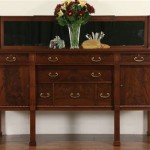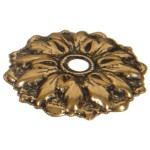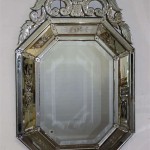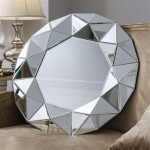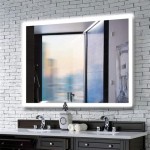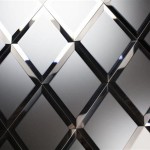How to Put a Heavy Mirror on a Wall Without Nails
Hanging a heavy mirror on the wall without using nails can be a challenge, especially if you're renting or want to avoid damaging your walls. Fortunately, there are several reliable alternatives that provide a secure hold without relying on traditional fasteners. This article will explore different methods you can employ, each with its own strengths and considerations.
Utilizing Adhesive Strips
Adhesive strips, often referred to as "command strips," offer a simple and damage-free solution for hanging lighter mirrors. While they may not be suitable for extremely heavy mirrors, they are a viable option for smaller or medium-sized pieces. Here's how to use them effectively:
-
Choose the Right Strips:
Select heavy-duty adhesive strips specifically designed for hanging heavier objects. Ensure the strips have a weight limit that exceeds the mirror's weight. -
Clean the Wall:
Wipe the wall surface where you'll be placing the mirror with a damp cloth to remove dust and debris. Ensure the wall is completely dry before proceeding. -
Apply the Strips:
Attach the adhesive strips to the back of the mirror, following the manufacturer's instructions regarding spacing and placement. Apply firm pressure to ensure the strips are securely bonded. -
Mount the Mirror:
Carefully press the mirror onto the wall, aligning it as desired. Hold it in place for a few seconds to ensure a strong bond.
Remember that adhesive strips may leave behind a residue if removed, so it's important to choose a location where this won't be a concern. For heavier mirrors, consider using multiple strips strategically placed to distribute the weight more evenly.
Employing Adhesive Hooks
Adhesive hooks provide a stronger attachment than strips, making them a good choice for heavier mirrors. These hooks are typically made of metal or plastic and feature a strong adhesive backing that allows for reliable mounting without nails.
-
Select Appropriate Hooks:
Choose heavy-duty adhesive hooks designed for hanging objects within the weight limit of your mirror. It's advisable to err on the side of caution and select hooks capable of supporting slightly more than the mirror's weight. -
Clean and Prepare:
Ensure the wall surface is clean and dry. If the wall is painted, it's recommended to test the adhesive on an inconspicuous area beforehand to ensure it doesn't damage the paint. -
Install the Hook:
Follow the instructions provided with the adhesive hook for proper installation. This often involves wiping the adhesive area with a clean cloth and pressing the hook firmly onto the wall for a specified duration. -
Hang the Mirror:
Once the hook is securely attached, gently hang the mirror from the hook. Avoid applying too much pressure immediately to prevent any accidental detachment.
Adhesive hooks are generally easy to remove without damaging the wall, though they may leave behind a small, inconspicuous mark. Always consult the hook's instructions for proper removal techniques.
Utilizing Hanging Systems
For heavier mirrors, hanging systems provide the most secure and reliable solution. These systems utilize a combination of heavy-duty adhesive strips and sturdy mounting plates, offering superior support for weighty objects. They are particularly suitable for large and ornate mirrors that require more robust anchoring.
-
Select a Suitable System:
Choose a hanging system specifically designed for heavier objects, capable of supporting the weight of your mirror. Check the system's weight limit and ensure it exceeds the mirror's weight. -
Mount the Plates:
Follow the manufacturer's instructions for mounting the system's plates onto the wall. This usually involves cleaning the wall surface, applying adhesive strips to the plates, and pressing them firmly onto the wall for secure adhesion. -
Attach the Mirror:
Once the plates are securely mounted, attach the mirror to the plates using the hanging system's hardware. This typically involves using a hanging wire or clips that connect to the plates.
Hanging systems offer excellent stability and are designed to hold heavy objects securely. However, they may require more time and effort for installation, and it's crucial to follow the manufacturer's instructions precisely for optimal performance and safety.
When considering any of these methods, it's essential to assess the weight of your mirror, the wall type, and the specific features of each solution. Remember to always prioritize safety and choose a method that provides adequate support for your mirror.

3 Simple Ways To Hang A Mirror On Wall Without Nails Wikihow

3 Simple Ways To Hang A Mirror On Wall Without Nails Wikihow

How To Hang A Mirror The Ultimate Step By Diy Guide Aspect Wall Art
How To Hang A Heavy Mirror On Drywall Without Damaging It Or The Wall Quora

How To Hang Heavy Mirrors Frames Without Nails 3m

How To Hang A Mirror On Wall Without Nails

How To Hang A Heavy Mirror The Home Depot

Hang A Mirror Without Nails Diyer S Guide To Great Results

How To Hang A Heavy Mirror At Home

How To Hang A Bathroom Mirror Without Nails S Or Drilling Velcro Brand

